Background of Restoration Fashion
Contents
Before the restoration period, the country was under Lord Protector Oliver Cromwell as a Protectorate State. After the execution of his father, King Charles II and his followers lived in exile for around 12 years in the Netherlands and France. Staying there Charles II developed the taste of latest trends that were ongoing in Europe especially in France.
When Charles II restored back the monarchy, he also replaced the dull, colorless and simple fashion of Puritan which dominated England during the period of Protectorate and Commonwealth. He started the Stuart dynasty by ushering in the extraordinary fashion and art over the decades of Puritan fashion.

Although two drastic events like Plague and Great Fire of London took place as soon as Charles II sat on the throne, that did not stop Charles II to infuse the culture of England with the new taste he developed while in the years of his exile.
Restoration Clothing
The fashion of Western European clothing is characterized by the rapid change in the Restoration Era. The style of clothing in this period is called Baroque and the fashion is called as the Carolean Fashion.
The influence of military-style of Puritan age in men’s clothing was replaced by a short period of decorative exuberance which then turned into the coats, breeches, and waistcoats. The normal fashion of broad, high-waisted silhouette was replaced with the long and lean lined low waists for men and women both. What emerged was the rise of Periwig as an accessory of men’ s fashion.
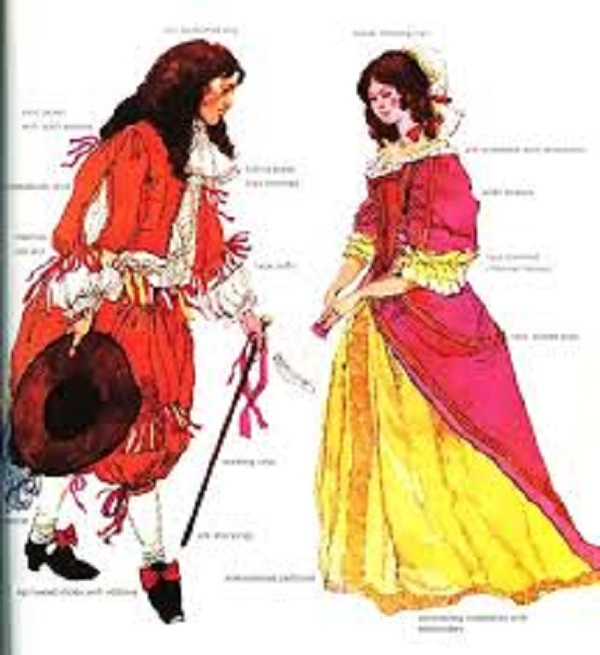
Apart from this, the restoration fashion was easily recognizable with the usage of ribbons, excessive curls, bows, puffs, feathers, flounces, and sleeve shortening. Long sleeves became an obstacle for the people and it seemed impractical for them, So they switched themselves to shorter sleeves
The usage of ribbon and lace was very excessive that ranged from their shoes to sleeves and even on the walking sticks of the men. Lace was so precious at that time that pirates stole them in large amounts and exported them to other US colonies.
Also, people started using bright and lucid colours which became too popular amongst them. They also tried to combine them in one or the other outfit. Charles II and the people discarded the usage of subdued hues and dark colours widely used during Puritan age.
The wide variety of vibrant colors reflected the latest fashion in Europe and also the effort of Charles II to end the previous age and fashion.
Men’s Fashion During the Restoration Era
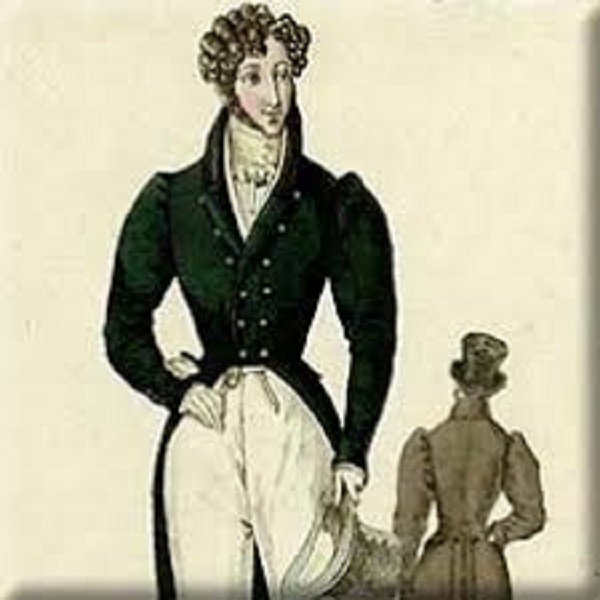
Here are some of the main trends of the Men’s Fashion during the age of Restoration
-Men were usually termed as Crossdresser. Their fashion was considered more extravagant than that of women’s fashion.
-Men wore heels, long-haired wigs and also applied some makeup.
-They also wore Cravats which is basically a wide piece of cloth that is tied around the neck. Another variation that is known as Steinkirk then evolved which was twisted around the neck instead of tying it.
-Men started to wear another variation of doublet called as the cassock. It was characterized by a lightly flared skirt, shorter sleeves and lower waistline that were extended to the knees. They opened down to the middle and revealed half of the legs. It allowed breeches from tubular form to petticoat form.
-Their petticoats were paired up with a hose and then decorated with ribbon.
-Men performed their routine work in short and loose leather jacket along with a various variety of vests.
Women’s Fashion During the Restoration Period
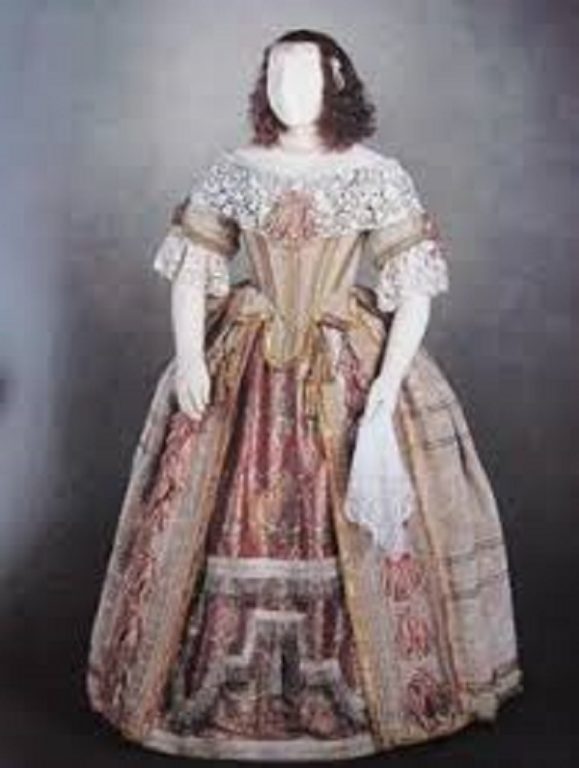
Here are some of the major trends of women’s clothing during the restoration period.
-The Silhouette of women grew vertically with some horizontal emphasis at the shoulder which was previously very wide and high waisted.
-The body of women is tightly corseted with broad and low neckline along with dropped shoulder.
-The overskirt is now drawn back and also pinned to display the heavily decorated petticoat.
-Another new trend developed among women to have their portrait painted while undress and wearing only a loose and fastened gown called a nightgown.
-In a previous age, women wore a bodice and skirt separately while in the restoration era Mantua aroused as a new fashion. The Mantua hung itself from shoulder to the floor. Eventually, it evolved into a pleated dress and draped over a stomacher and contrasting petticoat.
-As their court dress, women pulled their over-gown to the back and gathered all the trailing fabric in a bustle.
Hairstyles during the Restoration Era
Men’s Hairstyle
Men wore their long hair with curls that reached their shoulders. The fringe of the wigs was generally combed in forwarding style and also allowed to flow them a bit towards the forehead. The periwigs became too popular among the men especially after the baldness of Louis XIV.
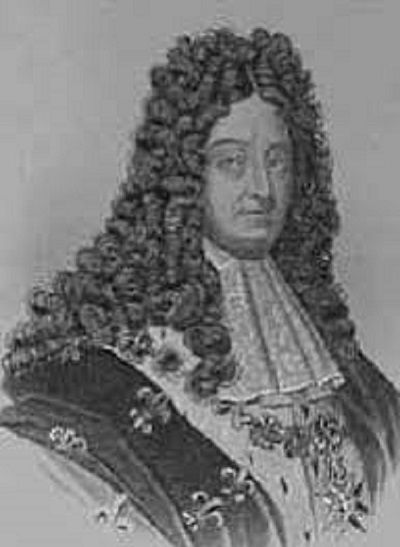
After wearing periwigs men just use to carry their hats by the side of their arms as an accessory instead of wearing it. Periwigs came in many natural hair colors beside being natural white color.
They were worn such as draping their face sides. Men during this time preferred clean-shaven face.
Women’s Hairstyle
A female silhouette became more vertical, women preferred the usage of fontage, wired and tiered lace headdress. With the passage of time, fontage consisted of 2 or 3 tiers. The nosegay was now replaced by ribbon bundles.
Although women had long hair during that time they did not allow them to pass below the area of the shoulder as they considered the theme for women’s hair to be very careful and negligence.
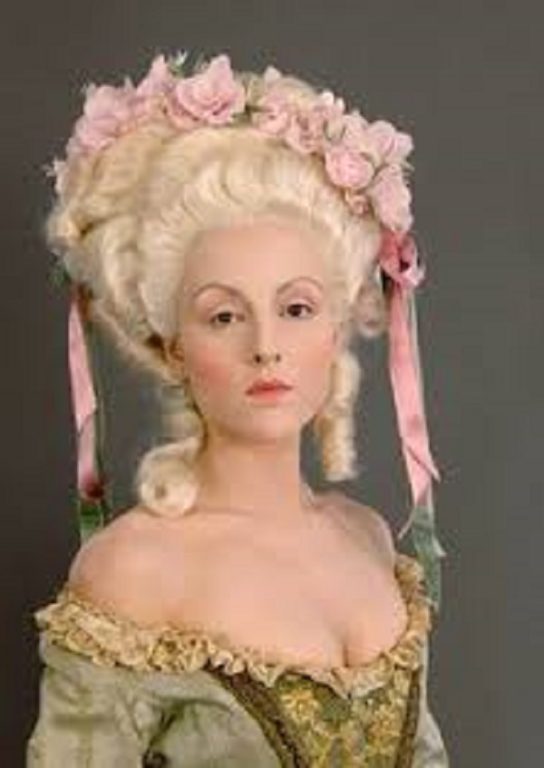
The popular hairstyle among the women during the restoration period was to have small and tight curls that are parted down the center and away from the face.